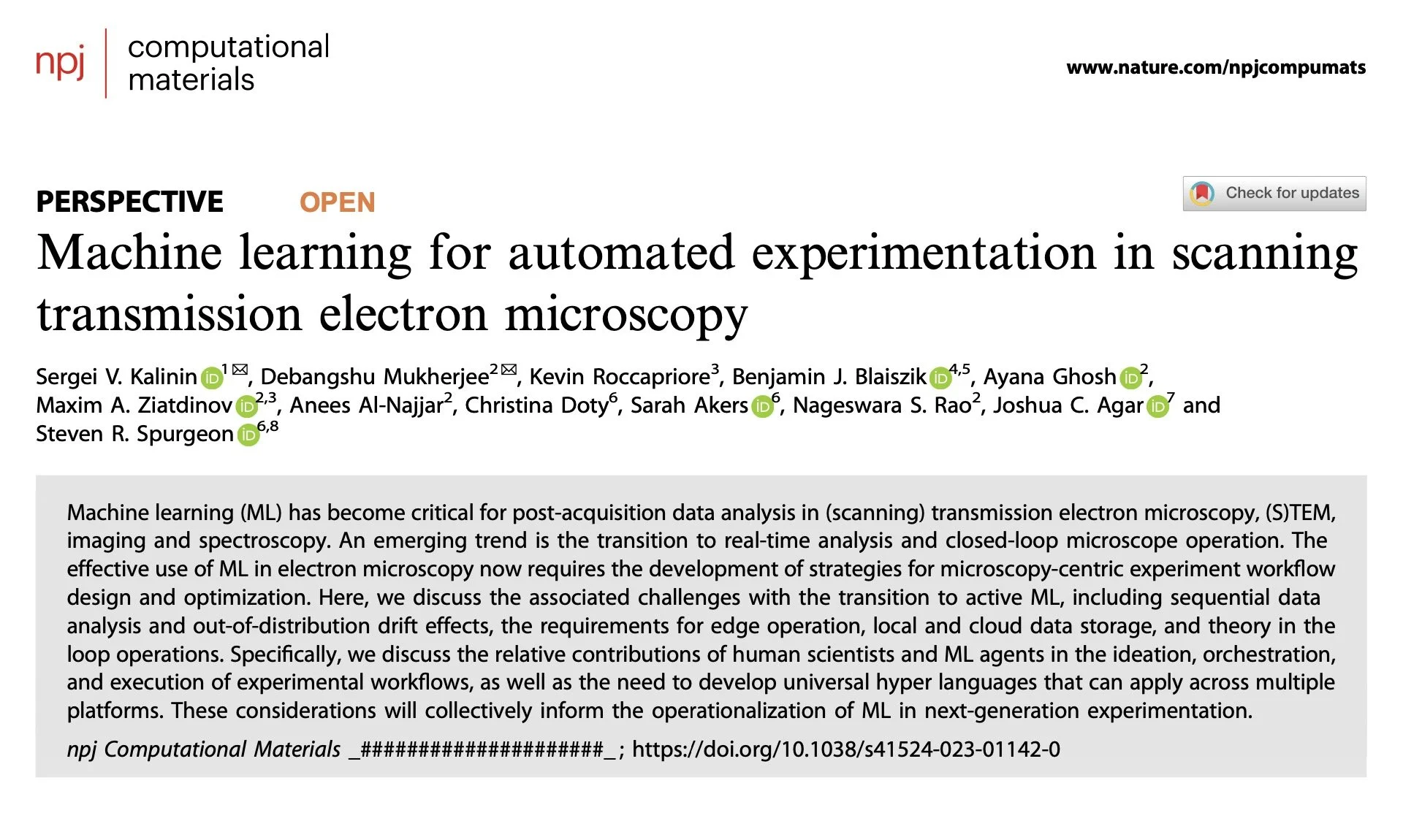AI-Guided Experimentation Perspective Published in npj Comp Mater
Operationalizing domain-aware AI/ML is incredibly challenging in electron microscopy, owing to a lack of benchmark datasets, programmable instrumentation, and methods to solve structures inversely from multimodal data. In our perspective in npj Computational Materials, we summarize some of the recent developments, challenges, and opportunities for emerging automated microscopy. Led by Sergei Kalinin, this work features exciting developments at Oak Ridge National Laboratory, Pacific Northwest National Laboratory, Argonne National Laboratory, the University of Chicago, and Drexel University.
From the abstract:
Machine learning (ML) has become critical for post-acquisition data analysis in (scanning) transmission electron microscopy, (S)TEM, imaging and spectroscopy. An emerging trend is the transition to real-time analysis and closed-loop microscope operation. The effective use of ML in electron microscopy now requires the development of strategies for microscopy-centric experiment workflow design and optimization. Here, we discuss the associated challenges with the transition to active ML, including sequential data analysis and out-of-distribution drift effects, the requirements for edge operation, local and cloud data storage, and theory in the loop operations. Specifically, we discuss the relative contributions of human scientists and ML agents in the ideation, orchestration, and execution of experimental workflows, as well as the need to develop universal hyper languages that can apply across multiple platforms. These considerations will collectively inform the operationalization of ML in next-generation experimentation.
